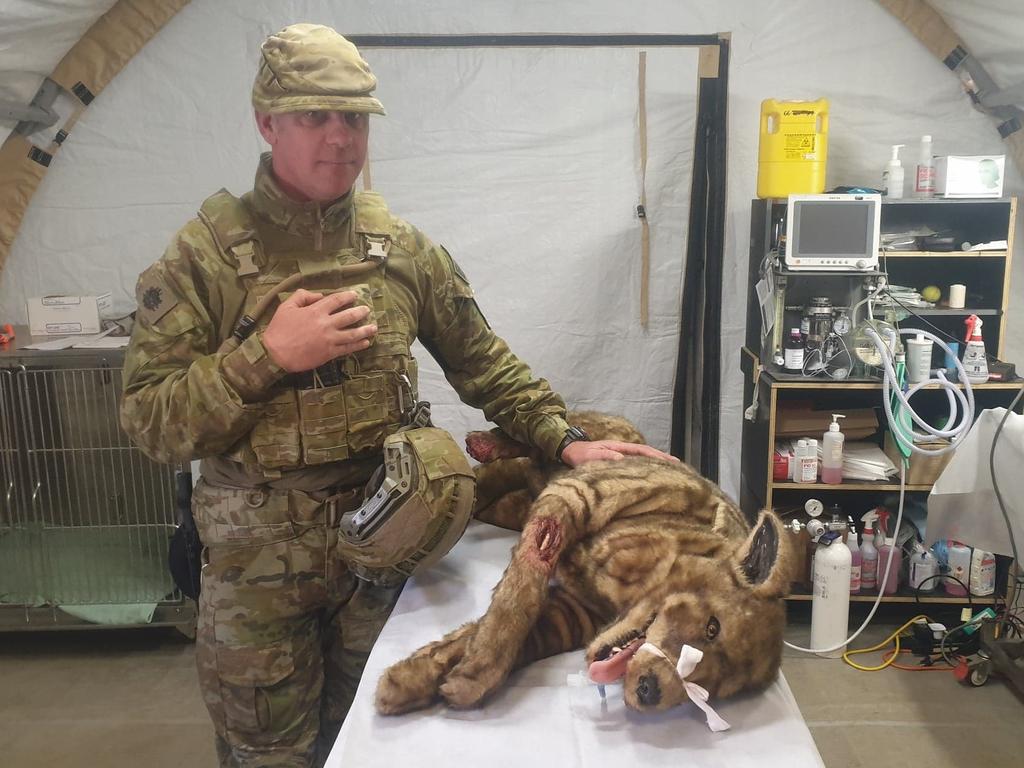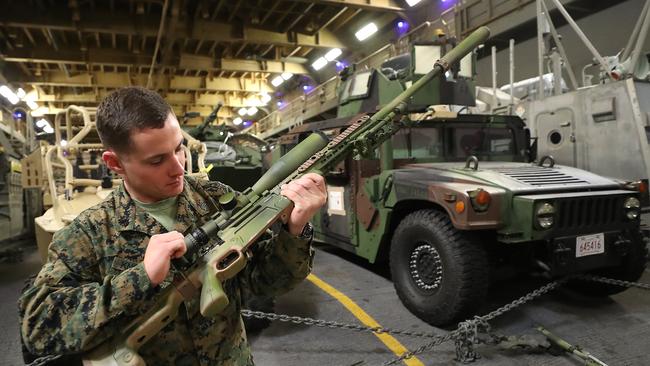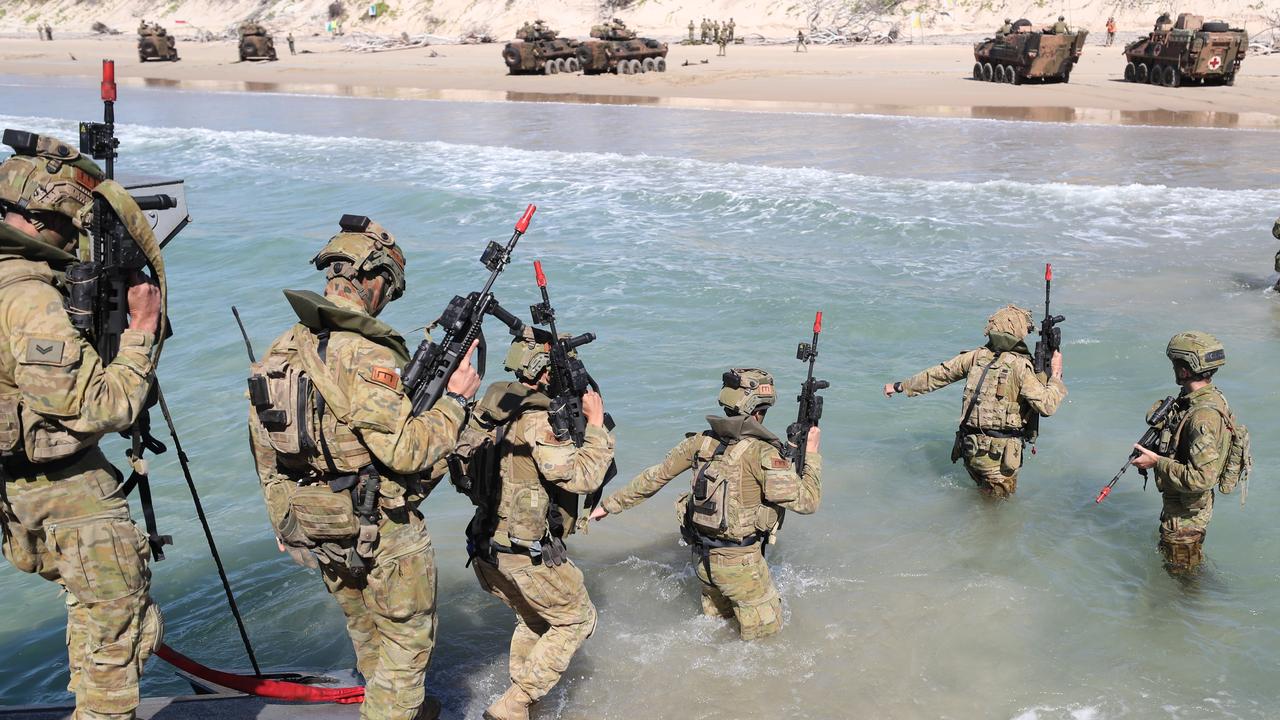Talisman Sabre 2019: Inside field hospital
In one room a dog lies covered in blood, a hind leg missing. In another, a soldier is sporting serious chest wounds. Helicopters roar overhead. The blood might be fake at this army field hospital in Central Queensland bushland, but the adrenaline is high.
QLD News
Don't miss out on the headlines from QLD News. Followed categories will be added to My News.
THE dog lay on the table with its hind leg blown off and blood spattered over various parts of his body.
A gaping wound, likely from shrapnel, was evident on his front leg, while a tube hangs from the canine’s mouth.
The life-size simulated dog (Simdog), which costs about $US13,000 ($A18,580), was tucked into a room at a field hospital in the middle of the Shoalwater Bay Military Training area, two hours outside of Rockhampton.
ONBOARD STEALTH FIGHTER SHIP USS WASP
THOUSANDS OF TROOPS STORM QUEENSLAND BEACH
The remote-controlled simdog is a training tool for veterinarians deployed to a war zone to treat injured military working dogs. Just like the real thing, the dog breathes, whines and barks.
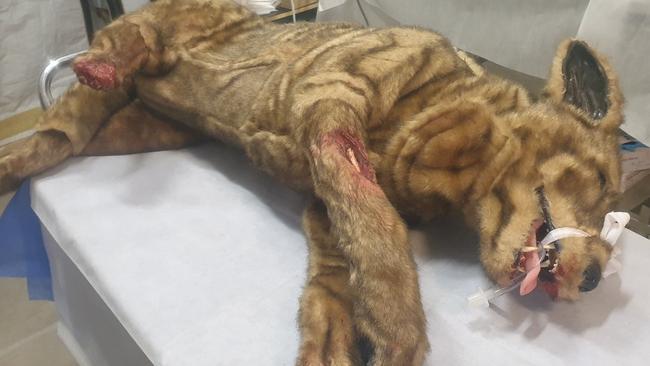
Interchangeable limbs and wounds make it possible to replicate traumatic injuries, allowing vets to respond to what they might encounter should a working dog be injured during a conflict.
A flap of fur can be pulled back to reveal the dogs ribs and provide access to its “lungs.”
It’s just one of the many facets tucked away in the Australian Army’s 2nd General Health Battalion hospital, set up near Williamson Airfield in the central Queensland bush.
On each side of the 90m x 70m white tent are multiple rooms, including three emergency bays, a 30-bed ward, a pathology lab, operating theatre, intensive care unit and other medical services including primary care doctors, a dentist, physiotherapist, psychologist and a chemist.
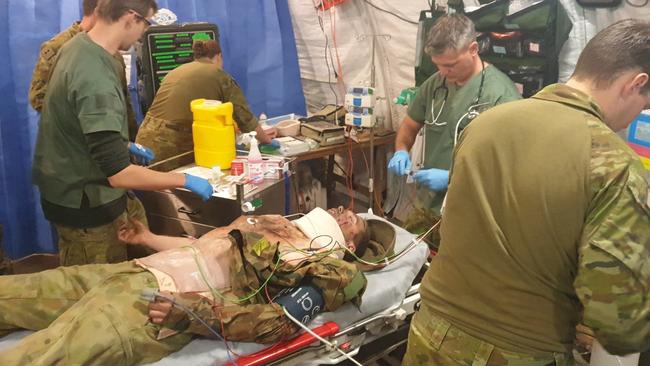
About 15 doctors and nurses spread out over two resuscitation bays, or emergency rooms, to work on two separate “casualties” on Tuesday.
The patients had arrived minutes apart and the rooms started buzzing with army and air force medical staff assessing the condition of each patient and determining treatment.
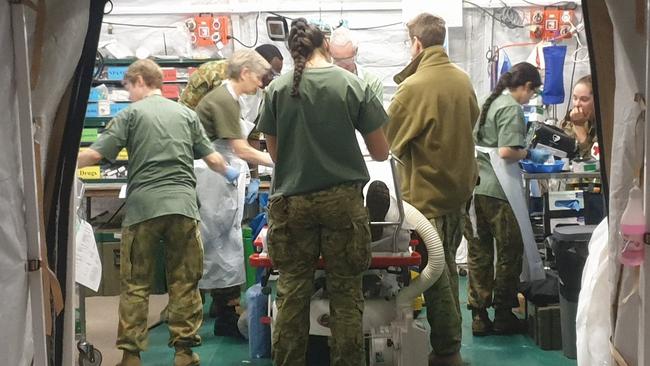
One casualty, complete with a moulage - a fake chest with realistic-looking wounds - was said to have a spinal injury caused by a bomb blast.
The other was being treated for a gunshot wound.
As the commotion continued inside, helicopters sporadically roared overhead.
It was just one small part of a day in weeks of training scenarios in the middle of Exercise Talisman Sabre, Australia’s largest bilateral-training exercise with the US Armed Forces.
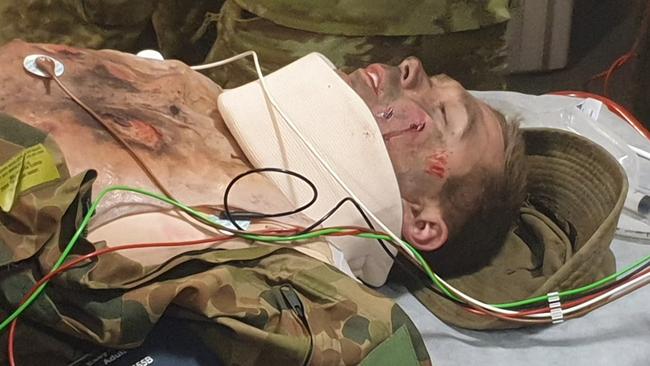
Commanding Officer of the Enoggera-based 2GHB, Lieutenant Colonel Paul Manuel, said the Australian Army’s hospital was one of only two in Australia, and the only deployable military one in the world that had gone through independent trauma verification.
“In 2017 the hospital went through an independent verification process with the Royal Australasian College of Surgeons, who came into the facility and assessed our capability,” he said.
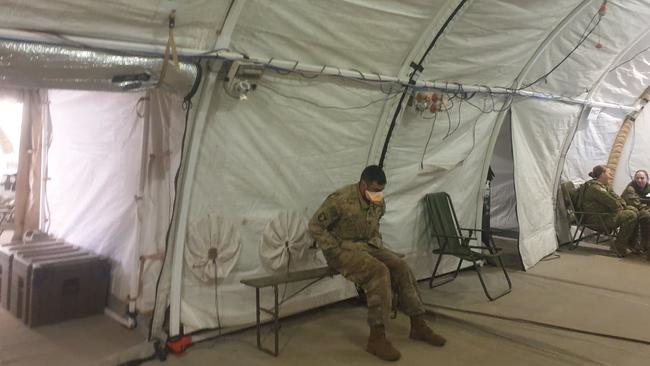
“They awarded us a level three trauma therapy accreditation. In layman’s terms … this means the capabilities that exist inside this hospital are comparable to any regional Australian trauma facility nationwide.”
The only thing the hospital can’t do is treat patients with spinal or brain injuries, due to lack of a CT scanner, though there is hope the hospital will have one in the future.
Those patients are evacuated to the closest hospital.
Outside the hospital, tents dot the camp. It usually houses 140 soldiers, but this week the population has surged to 195.

Soldiers with Austeyr rifles keep look out at the front gate, while others walk around camp, weapon slung over their shoulder.
New Zealand Army Sapper Sean O’Keeffe and his explosive detector dog, Inky the black Labrador, are walking towards the hospital. With them is fellow dog handler, Lance Corporal Maylin Broderick, who has Inky’s sister, Iris.
The dogs turn two next week but right now their mission is to head to the vet for a worming tablet.
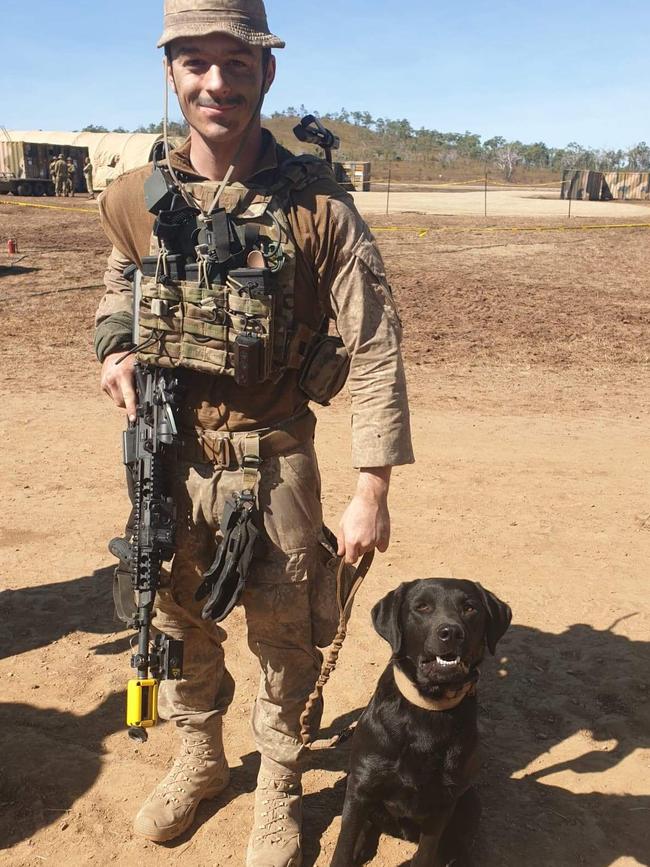
In other parts of Shoalwater, Australian, US and New Zealand trucks, spaced apart throughout the trees, dot the landscape.
Camouflage nets cover most tents and some vehicles, rifles mounted on the top.
Mechanics work on some trucks, while others are getting refuelled with the use of collapsible petrol tanks that look like inflated tyres.
Camo war paint adorns the faces of the soldiers waiting for the next phase of the exercise to happen.
This year the training scenario features a fictitious adversary dubbed Kamaria, a nation whose military has overthrown the democratically elected government of the island nation of Legais.
Australia, US and Japanese forces, or “Team Blue,” have the task of restoring the sovereignty of the allied nation.
But first they must defeat the enemy, known as Team Red, played by some of the Australian military.
Talisman Sabre involves 34,500 personnel from six countries along with 36 ships, the largest exercise of its type.
Now in its eighth iteration, it is designed to test and practice combat readiness and interoperability between Australia and the US Armed forces.
The exercise extends as far north to Townsville and as far south as the Evans Head Air Weapons Range in northern NSW and ends July 24.
